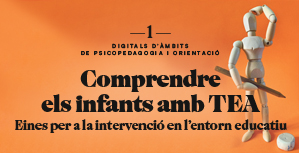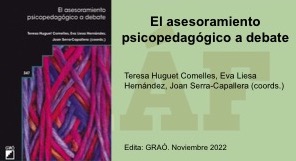Estilo Personal, Valores y Alianza
Resumen
En la última década se ha adelantado de manera significativa en el estudio de la figura del psicoterapeuta en el campo de la psicoterapia. Después de muchos años centrando mucha atención de la investigación en las características psicopatológicas del paciente y en las técnicas de intervención especificas para cada una de ellas se ha incrementado el interés de estudiar las variables del psicoterapeuta que influyen en el proceso psicoterapeutico y en el resultado final del trabajo psicológico (Corbella, 2008, Hill, 2007). El presente artículo plantea algunos aspectos de la investigación en psicoteapia como el Estilo Personal del Terapeuta y la Alianza Terapéutica para tender puentes entre la psicoterapia y la psicopedagogía.
Citas
Atkinson, D., & Schein, S. (1986). Similarity in counseling. The Counseling Psychologist, 14, 319-354.
Bachelor, A. (1991). Comparison and relationship to outcome of diverse dimensions of the helping alliance as seen by client and therapist. Psychotherapy, 28, 534-549.
Barber, J. P., Connolly, M. B., Crits-Christoph, P., Gladis, L., & Siqueland, L. (2000). Alliance predicts patients' outcome beyond in-treatment change in symptoms. Journal of Consulting and Clinical Psychology, 68(6), 1027-1032.
Bergin, A. E. (1980). Psychotherapy and religious values. Journal of Consulting and Clinical Psychology, 48, 95-105.
Bergin, A. E., & Jansen, J. P. (1989). Religiosity of psychotherapists: A national survey. Psychotherapy, 27, 3-7.
Beutler, L. E., Arizmendi, T. G., Crago, M., Shandfield, S., & Hagaman, R. (1983). The effects of value similarity and clients’ persuadability on value convergence and psychotherapu improvement. Journal of Social and Clinical Psychology, 1, 231-245.
Beutler, L. E., & Bergan, J. (1991). Value change in counseling and psychotherapy: A search for scientific credibility. Journal of Counseling Psychology, 38, 16-24.
Beutler, L. E., Clarkin, J. F., & Bongar, B. (2000). Guidelines for the systematic treatment of the depressed patient. New York, NY, US: Oxford University Press.
Beutler, L. E., Clarkin, J., Crago, M., & Bergan, J. (1991). Client-therapist matching. En C. R. Snyder y D. R. Forsyth (Eds.), Handbook of social and clinical psychology: The heath perspective (pp. 699-716). Elmsford, NY: Pergamon.
Beutler, L. E., & Clarkin, J.F. (1990). Systematic treatment selection: toward targeted therapeutic interventions. New York: Brunner/Mazel.
Beutler, L. E., & Harwood, T. M. (2000). Prescriptive psychotherapy: A practical guide to systematic treatment selection. New York, NY, US: Oxford University Press.
Beutler, L. E., Machado, P. P., & Neufeldt, S. (1994). Therapist variables. En A. E. Bergin y S. L. Garfield (Eds.), Handbook of psychotherapy and behavior change (4ª ed., pp. 229-264). New york: John Wiley.
Bordin, E. S. (1976). The generalization of the psychoanalytic concept of the working alliance. Psychotherapy: Theory, Reseach and Practice, 16, 252-260.
Bordin, E. S. (1994). Theory and research on the therapeutic working alliance: New directions. En A. O. Horvath y L. S. Greenberg (Eds.). The working
alliance: Theory, research, and practice (pp. 13-37). New York: Wiley.
Botella, L. y Corbella, S. (2005). Neurobiología de la Autorregulación Afectiva, Patrones de Apego y Compatibilidad en la Relación Terapeuta-Paciente. Revista de Psicoterapia, 61, 77-104.
Corbella, S. (2003). Compatibilidad entre el Estilo Personal del Terapeuta y el Perfil Personal del Paciente. Tesis doctoral.
Corbella, S. y Botella, L. (2003). La alianza terapéutica: historia, investigación y evaluación. Anales de Psicología, 19, 205-221.
Corbella, S. y Botella, L. (2004a). Investigación en Psicoterapia: Proceso, Resultado y Factores Comunes. Madrid: Vision Net.
Corbella, S. & Botella, L. (2004b). Psychometric Properties of the Spanish Version of the Working Alliance Theory of Change Inventory (WATOCI). Psicothema, 16, 702-705.
Corbella, S., Fernandez-Alvarez, H. (2006). El terapeuta, posiciones, actitudes y estilos personales. En L. Botella (Ed.). Construcciones, narrativas y relaciones: Aportaciones constructivistas y construccionistas a la psicoterapia. Barcelona: Edebe.
Corbella, S (2008). Research on the Therapist’s Personal Style. Panel, Annual meeting, Society for Psychotherapy Research. Barceona, Espanya.
Fernández-Álvarez., & García (1998). Cuestionario del Estilo Personal del Terapeuta. Buenos Aires: Aiglé.
Fernández-Alvarez, H. (1998). El estilo personal del psicoterapeuta. En Oblitas Guadalupe, L. A. Quince enfoques terapéuticos contemporáneos. México: El Manual Moderno.
Frank, J. D. (1973). Persuasion and healing: A comparative study of psychotherapy (rev. Ed.). Baltimore: The Johns Hopkins University Press.
Gelso, C. J., & Carter, J. A. (1994). Components of the psychotherapy Relationship: Their interaction and unfolding during treatment. Journal of Counseling Psychology, 41, 296-306.
Hill, C. (2006). Introduction to special section on therapist effects. Psychotherapy Research, 16(2), 143-144.
Horvath, A. O., & Luborsky, L. (1993). The role of the therapeutic alliance in psychotherapy. Journal of Consulting and Clinical Psychology, 61(4), 561-573.
Horvath, A. O., & Symonds, B. D. (1991). Relation between alliance and outcome in psychotherapy: A meta-analysis. Journal of Counseling Psychology, 38, 139-149.
Kelly, T. A. (1990). The role of values in psychotherapy: Review and methodological critique. Clinical Psychology Review, 10, 171-186.
Kelly, T. A. y Strupp, H. H. (1992). Patient and therapist values in psychotherapy: Perceived changes, conversion, similarity, and outcome. Journal of Consulting and Clinical Psychology, 60, 34-40.
Khan, J. A., & Cross, D. G. (1983). Mental health professional and client values: Similar or different? Australian Journal of Sex, Marriage y Family, 4, 71-78.
Luborsky, L. (1994). Therapeutic alliances as predictors of psychotherapy outcomes: Factors explaining the predictive sucess. En A. O. Horvath y L. S. Greenberg (Eds.), The working alliance: Theory, research, and practice (pp. 38-50). New York: Wiley.
Luborsky, L. (2000). A pattern-setting therapeutic alliance study revisited. Psychotherapy research, 1, 17-29.
Martin, D. J. (1999). Relation of the therapeutic alliance with outcome and other variables: A meta-analytic review., Ohio U, US.
Norcross, J. (2002). Psychotherapy Relationships that Work. Oxford: Oxford University Press.
Orlinky, D., Grawe, K., & Parks, B. (1994). Process and outcome in psychotherapy-Noch ein mal. En A. Bergin y J. S. Garfield, (Eds.). Handbook of psychotherapy and behavior change (4th Edition) (pp. 270-378). New York: Wiley and Sons.
Premack, D. y Woodruff, G. (1978). Does the chimpanzee have a theory of Mind? Behavioral and Brain Sciences, 1, 515-526.
Sturm, L., & Dawson, P. (1999). Working with families: An overview for providers, Kessler, Daniel B. (Ed); Dawson, Peter (Ed). (1999). Failure to thrive and pediatric undernutrition: A transdisciplinary approach. (pp. 65-76). Baltimore, MD, US: Paul H. Brookes Publishing Co.
Shafraske, E. P., & Malony, H. N. (1990). Clinical psychologists’ religious and spiritual orientations and their practice of psychotherapy. Psychotherapy, 27, 72-78.
Weerasekera, P., Linder, B., Greenberg, L., & Watson, J. (2001). The working alliance in client-centered and process-experiential therapy of depression. Psychotherapy Research, 11(2), 221-233.
Worthington, E. L., Jr. (1988). Understanding the values of religious clients: A model and its application to counseling. Journal of Counseling Psychology, 35, 166-174.
Descargas
Publicado
Número
Sección
Licencia
Los autores/as conservan los derechos de autor y conceden a la revista el derecho de primera publicación de la obra, registrada bajo una licencia Creative Commons Reconeixement-NoComercial-Sense Obra Derivada. Esta licencia permite la descarga de las obras y que se puedan compartir con otros siempre que se reconozca la autoría, pero no permite que se modifiquen de ninguna forma ni ser utilizadas con finalidad comercial.















